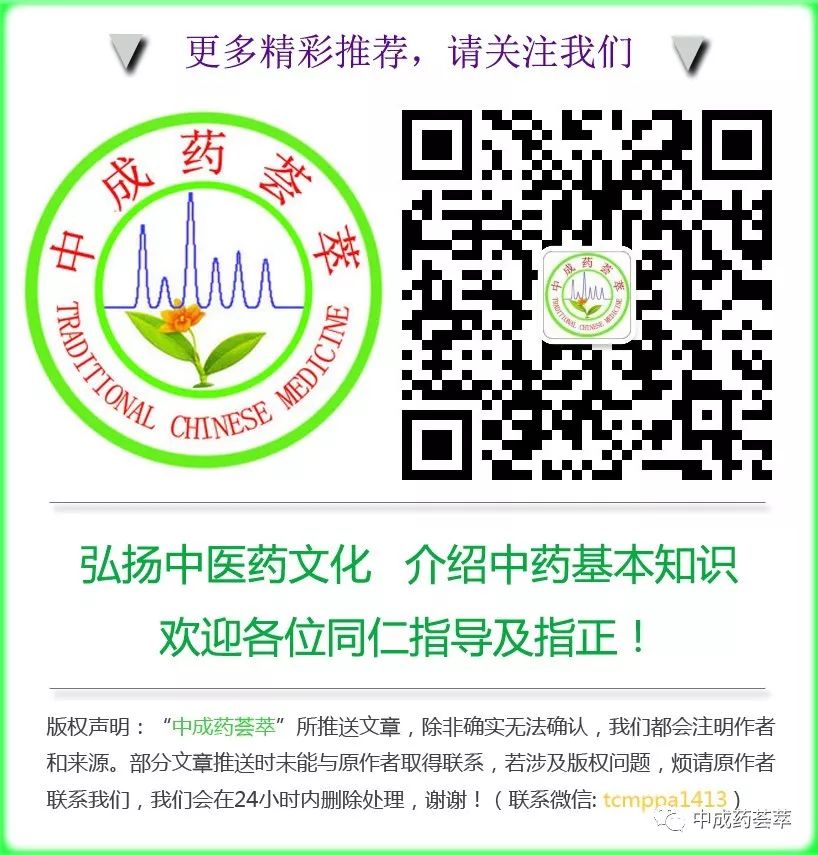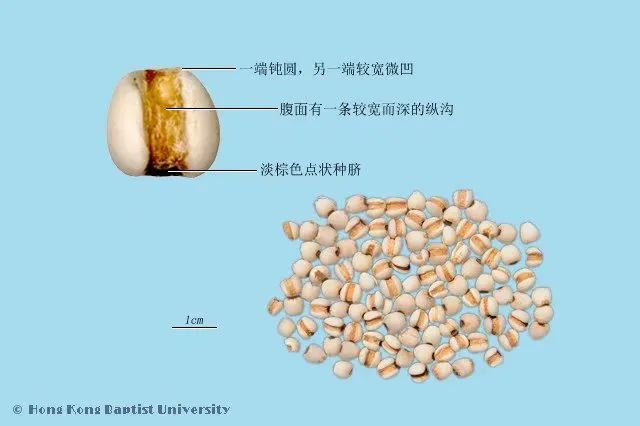
Identification Points for Coix Seed☝
Premium Chinese Medicine | Coix Seed
Coix Seed (Yì Yǐ Rén) is the dried mature seed of the plant Coix lacryma-jobi L. var. ma-yuen (Roman.) Stapf, belonging to the family Poaceae. The plant is harvested in autumn when the fruit is ripe, dried, and the seeds are separated from the fruit, then further dried, removing the outer shell, yellow-brown seed coat, and impurities to collect the seeds.【Properties and Channels】 Sweet, bland, and cool. Enters the Spleen, Stomach, and Lung meridians.【Functions and Indications】 Promotes urination and drains dampness, strengthens the Spleen and stops diarrhea, alleviates bi syndrome, expels pus, detoxifies and disperses masses. Used for edema, beriberi, difficult urination, Spleen deficiency diarrhea, damp bi syndrome with contraction, lung abscess, intestinal abscess, warts, and cancerous tumors.
Original Plant:
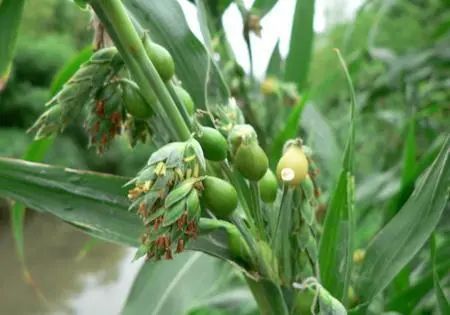
Herb/Preparation:

Quality Grades:
Based on different sources, Coix Seed is divided into “domestic Coix Seed” and “imported Coix Seed”.
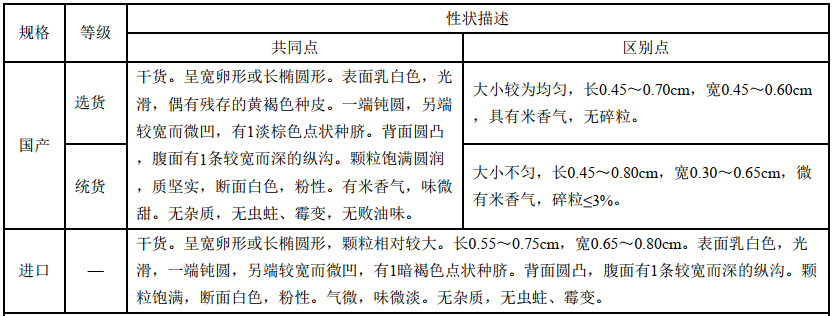
Note:
1. Currently, the market for Coix Seed rarely categorizes it; most are distinguished by selected goods and general goods.2. There is a certain quantity of imported Coix Seed in major herb markets; whether this variety has been certified or meets pharmacopoeia standards is currently unverified.
Herb Requirements:
No discoloration;No insect damage;No mold;Impurities less than 3%.
Different Quality Grades of Herbs:
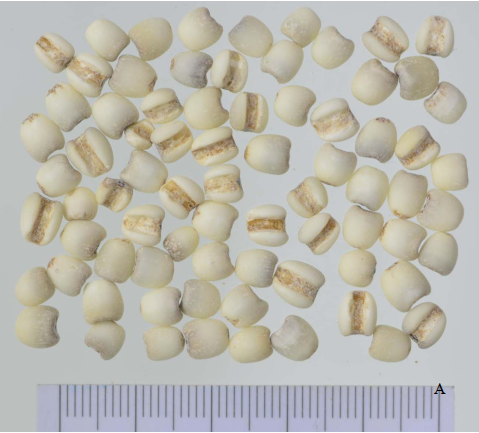
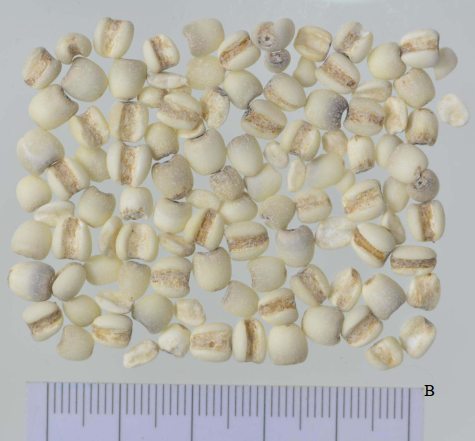

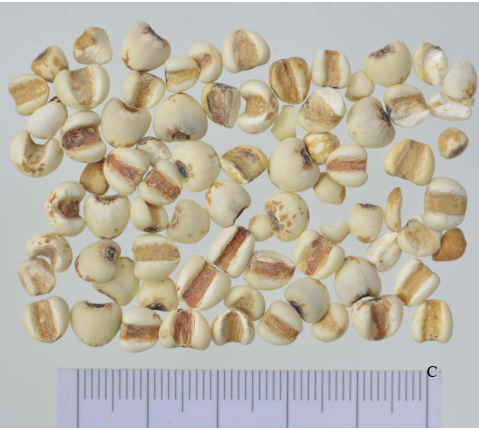
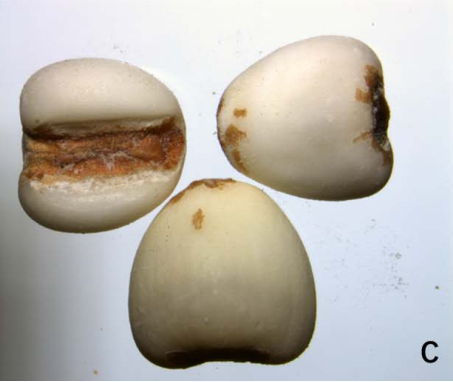
A. Selected Goods; B. General Goods; C. Imported
Overview:
Coix Seed is first recorded in the “Shennong Bencao Jing” as a superior product, indicating its use at least since the Eastern Han Dynasty. The Tang Dynasty’s “Newly Compiled Materia Medica” states that Coix Seed (as per the “Bencao”) is slightly cold. In the Song Dynasty, Tang Shenwei’s “Illustrated Materia Medica” states: Coix Seed grows in Zhen Ding Ping Ze and fields, and is found in many places today. It sprouts in spring, with stems reaching three to four feet. The leaves resemble millet. It flowers red and white, forming spikes. The fruit ripens in May and June, greenish-white, shaped like beads but slightly elongated, hence called ‘Yi Zhuzi’. Children often thread them like beads for play. The fruit is harvested in August, and the roots can be harvested at any time. Nowadays, it is commonly harvested in September and October, using the seeds inside. Ancient formulas primarily used it for heart and lung conditions. Wei Dan treated lung abscesses, and for those with chest tightness, he used bitter wine to boil it. Chen Cangqi’s formula for treating thirst and expelling roundworms involved the root. It was noted that in the Song Dynasty, people had begun to cultivate Coix Seed and its usage had become more widespread. The “Leigong Pao Zhi Lun” from the Southern and Northern Dynasties records: Leigong said: “Do not use Coix Seed that is large and tasteless; this is what people call ‘Jing Yi’. The small, greenish, sweet-tasting Coix Seed sticks to the teeth, use one or two taels, and cook it with one tael of glutinous rice until the rice is cooked, then remove the rice and use it. If boiled with salty soup, it is a common remedy.” The Yuan Dynasty’s Wang Haogu’s “Tang Ye Bencao” states: “It is used for muscle spasms and contractions, cannot bend or stretch, wind-damp bi syndrome, and promotes qi. It expels evil qi from the muscles and benefits the stomach and intestines, reduces edema, and increases appetite. Long-term use lightens the body and boosts qi. Its root can expel three types of parasites. Zhongjing treated wind-damp dryness and pain, especially severe in the afternoon, with a formula of Ephedra, Apricot, and Coix Seed. The Ming Dynasty’s “Bencao Fengyuan” states: Coix Seed is sweet and cold, raises the less and lowers the more, can clear Spleen dampness, expel Lung heat, and treat deficiency cough. Lung atrophy and lung abscess, with deficiency fire rising, are all suitable for use. It also helps to lower and benefit the muscles, thus the “Bencao” treats chronic wind-damp bi syndrome, with contractions that cannot bend or stretch. It is essential to treat muscles by taking Yangming and to treat dampness by supporting Earth qi; its function specializes in promoting urination, and with dampness removed, the Spleen and Stomach become strong. The Ming Dynasty’s Chen Jiayuan’s “Bencao Meng Quan” states: “It can be decocted with other herbs (roasted and ground) or mixed with glutinous rice to make porridge. (Coix Seed grains are hard, so they must be boiled half-cooked before mixing with glutinous rice to cook; the porridge will be thick and sticky.) It is specifically for treating damp bi syndrome and lung abscess. It is most effective for muscle spasms and contractions, making bending and stretching difficult (this is damp bi syndrome). Coughing with phlegm and blood is extremely beneficial (this is lung abscess).” The Ming Dynasty’s Li Shizhen’s “Bencao Gangmu” states: “Coix Seed is widely cultivated, self-seeding in two to three months. The leaves resemble newly sprouted sugarcane. In May and June, it sprouts, flowers, and bears fruit. There are two types: one that sticks to the teeth, pointed and thin-shelled, is Coix Seed, its grains are white like glutinous rice, suitable for porridge and rice dishes, and can also be used to brew wine; the other is round and thick-shelled, which is the Bodhi seed, with fewer grains, known as glutinous rice. The Ming Dynasty’s Huang Zhongzhao’s “Bamin Tongzhi” states: Coix Seed sprouts in spring, with stems and leaves resembling sticky. It flowers red and white, forming spikes, with fruit that is greenish-white, shaped like beads but elongated. It is found in Fuzhou, Jianing, Shaowu, Xinghua, and Funing. The Qing Dynasty’s “Bencao Xin Bian” states: Coix Seed is sweet, slightly cold, non-toxic. It enters the Spleen and Kidney meridians, and also enters the Lung. It treats damp bi syndrome effectively, relaxes muscle contractions, alleviates bone pain, reduces swelling, promotes urination, and opens the appetite. It also treats lung abscesses. However, it must be used in one or two taels to be effective; less than five qian is insufficient, otherwise, it will be weak and bland. Coix Seed is best at promoting urination, … The “Ming Yi Bie Lu” states: Superior product, Volume 1 Coix Seed: “Bencao” original text: Coix Seed, sweet, slightly cold. It treats muscle spasms and contractions, cannot bend or stretch, wind-damp bi syndrome, promotes qi. Long-term use lightens the body and boosts qi. The Qing Dynasty’s Wu Qijun’s “Plant Names and Facts” states: Coix Seed is a superior product in the “Bencao”. It is produced abundantly in Jiangxi and Hunan. A type of grass seed from the north is what the text refers to: children thread them like beads for play, as mentioned by Leigong. The 1963 edition of the “Chinese Pharmacopoeia” states: It is mainly produced in Fujian, Hebei, and Liaoning, with large, full, and white grains being the best. The 1977 edition of the “Chinese Pharmacopoeia” states: It is mainly produced in Fujian, Hebei, and Liaoning, with large, full, and white grains being the best. The 2010 edition of “Jin Shiyuan’s Traditional Identification Experience of Chinese Medicinal Materials” states: All are sourced from cultivated varieties. It is produced in most regions of the country, mainly distributed in Fujian, Zhejiang, Hebei, Liaoning, Jiangsu, etc. The Coix Seed produced in Pucheng, Fujian is called “Pu Yì Yǐ”; the one from Anguo (Qizhou) in Hebei is called “Qi Yì Mǐ”; and the one from Liaoning is known as “Guan Yì Mǐ”, which is the most famous.
The historical materia medica emphasizes that Coix Seed is a type that sticks to the teeth, pointed and thin-shelled, with grains that are white like glutinous rice, highlighting that large, full, and white grains are the best, providing a basis for establishing the quality grading standards for Coix Seed products.
References:
1. “Illustrated Color Guide to Chinese Medicinal Materials and Original Plants of the People’s Republic of China”
2. “Pharmacopoeia of the People’s Republic of China” 2020 Edition, Volume 1
3. Chinese Association of Traditional Chinese Medicine
